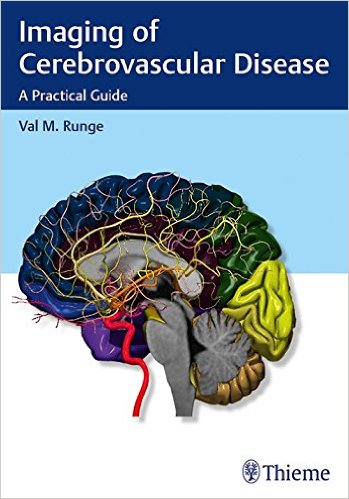
[highlight color=”red”]Imaging of Cerebrovascular Disease: A Practical Guide 1st Edition[/highlight]
[ads2]
…a good starting point for those early in their neuroradiology training. For others, a study of the images and the accompanying legends is a good review of the commonly encountered aspects of CV disease. — American Journal of Neuroradiology
…an image-rich, information-rich compendium that serves well both a resident starting to cope with complex central nervous system vascular anatomy and pathology and the practicing radiologist in day-to-day clinical work….I enthusiastically recommend this textbook to all residents, neuroradiology fellows, and general diagnostic radiologists. — Investigative Radiology
Imaging plays an integral role in the diagnosis and intervention of debilitating, often fatal vascular diseases of the brain, such as ischemic and hemorrhagic stroke, aneurysms, and arteriovenous malformations (AVMs). Written by a world renowned neuroradiologist and pioneer in the early adoption of magnetic resonance (MR) technology, Imaging of Cerebrovascular Disease is a concise yet remarkably thorough textbook that advances the reader’s expertise on this subject.
The text draws on the author’s vast personal experience, case studies, and traditional educational sources, offering didactic dialogue with accompanying images. A practical clinical resource organized into six chapters, this book offers unparalleled breadth in delineating the diagnostic and treatment usages of modern imaging techniques. Chapter one sets a foundation with extensive coverage of modalities and their applications, including MR, computed tomography (CT) and digital subtraction angiography (DSA). Subsequent chapters cover utilization of imaging techniques specific to underlying pathologies.
[ads1]
Key Features:
- In-depth discussion of medical and neuroradiologic/neurosurgical interventions, focusing on the use of imaging prior to, during, and following treatment
- Comprehensive text enhanced with more than 700 high-quality images
- Detailed evaluation of normal brain anatomy, as well as gyral anatomy in brain ischemia, an important subtopic
- Advantages, disadvantages, mortality, and morbidity of surgery (clipping) versus endovascular techniques (coiling and flow diversion) for aneurysms
Presented in a style that facilitates cover-to-cover reading, this is an essential tool for residents and fellows, and provides a robust study guide prior to sitting for relevant certification exams. It is also a quick, invaluable reference for radiologists, neurosurgeons, and neurologists in the midst of a busy clinical day.
[ads2]
Product Details
|

[ads2]
[ads1]

